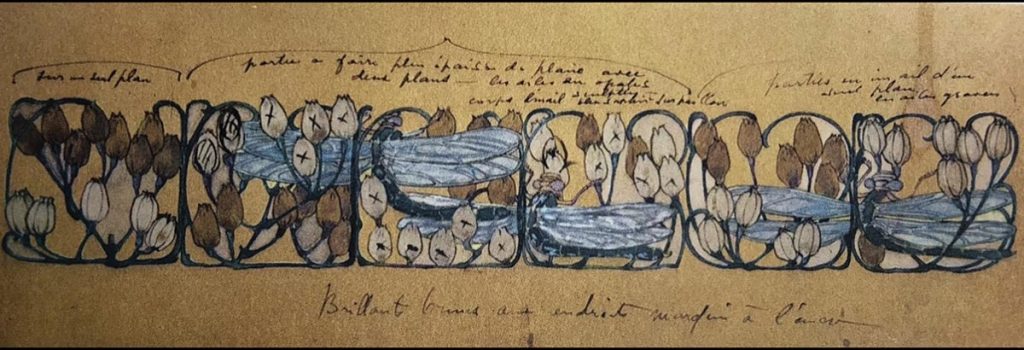
Forget pirates and swashbucklers, Sebastian Clarke and Katherine van Dell are modern-day treasure hunters. Together, the husband-and-wife duo have decades of experience in auctions and antique appraisal, with Sebastian specializing in English and European furniture and decorative arts, and Katherine in jewelry.
They relocated to West Palm Beach with their children in 2019 and now work with Heritage Auctions, which is slated to open a full-service office in West Palm Beach next month. In addition to continued appearances on the hit PBS series Antiques Roadshow, Sebastian and Katherine are excited to bring their talents to the South Florida community and its savviest collectors.
PBI recently caught up with them to discuss their backgrounds, most memorable discoveries, and more.

PBI: How did your respective interests in antique and collectible furniture, the decorative arts, and jewelry begin?
Katherine: Sebastian comes from a family background in the arts and antiques across a broad range of categories. I do not. My parents, who worked for the airlines and traveled, made exposure to the arts a priority. I went to art school in Philadelphia, where they had a strong jewelry and decorative arts department, which attracted me because [jewelry lives] alongside fashion and across thousands of years of cultural significance. It’s the most visual way to translate status or significant life events. It was also a great intersection of my interests in art and the actual bench-making process, which informs how I evaluate a piece.
Sebastian: I moved to America from Wales when I was 18 to join my father, who worked for an auction house. My first job was putting tacks into the backs of picture frames. I later joined my godfather at his painting restoration studio in New York City. Every day I walked Madison Avenue with five paintings under each arm that were wrapped in cardboard after they’d been restored or cleaned, and I delivered them to the world’s most important galleries. Quite innocently, I had no clue what they were. My interests expanded into eighteenth-century English and European furniture over the next few years. My mother was a textile restorer at the world-famous Victoria & Albert Museum in London, where she handled some of the world’s most important textiles.
How did your careers evolve into the auction business?
Sebastian: I had the great opportunity to work at Sotheby’s in New York as a specialist in European furniture and have been involved in that arena for over 20 years, including serving as an auctioneer for major auction houses and nonprofits.
Katherine: I began working many years ago for auction houses in the Northeast. … In this arena, you learn quickly that it’s a business where you’re typically meeting people at a difficult time in their lives and need to be sensitive. It usually involves one of the three Ds: death, divorce, or debt.

What has been one of your most important and unexpected finds?
Katherine: A Lalique plique-à-jour enamel dragonfly bracelet. I remember seeing it in the bottom of a safety deposit box that I was inventorying and knowing immediately that it was an important piece. Just talking about it still gives me goosebumps. I don’t have a very good poker face, and I might have even wept. Sebastian will agree that we’re lucky to have those experiences quite a bit. It’s not uncommon that you see really great things across a broad spectrum of “good-better-best” items.
Sebastian: This piece Katherine speaks so passionately about came at the beginning of her career. She remained in contact with the client, more as a friend than anything, until it was sold at auction in 2021 for $329,000.

In some respects, you’re like private investigators piecing together a story.
Katherine: Yes. Whether it’s an armchair or a bracelet, everything presents its own unique questions concerning its history and value. Is it important because of who owned it or where it came from? There’s a long list of reasons, whether it be costume jewelry or a signed piece [by] Van Cleef & Arpels.
Sebastian: To Katherine’s point, many years ago a client consigned a pair of George III English mahogany benches from about 1760, and one of them had pretty significant burn marks on one side. Something told me I needed to pull on that thread, and it turned out they were from an important English house that burned down in the 1960s. I found pictures of them in that house flanked by marble columns. They went on to sell for $500,000.
What trends are you seeing in your respective categories?
Sebastian: We’re seeing a whole new category of buyer collecting what’s eclectic and diverse; [for example,] a beautiful contemporary painting or print hanging above an eighteenth-century commode flanked by a pair of modernist armchairs.
Katherine: In jewelry I think that the ’80s are having a comeback. We’re moving away from things that are little and delicate and instead seeing really big, bold, substantial pieces and layered jewelry, which I love.
What advice would you give to those interested in the secondary market?
Katherine: Ask lots of questions, do your homework, and always, always buy what you love.



